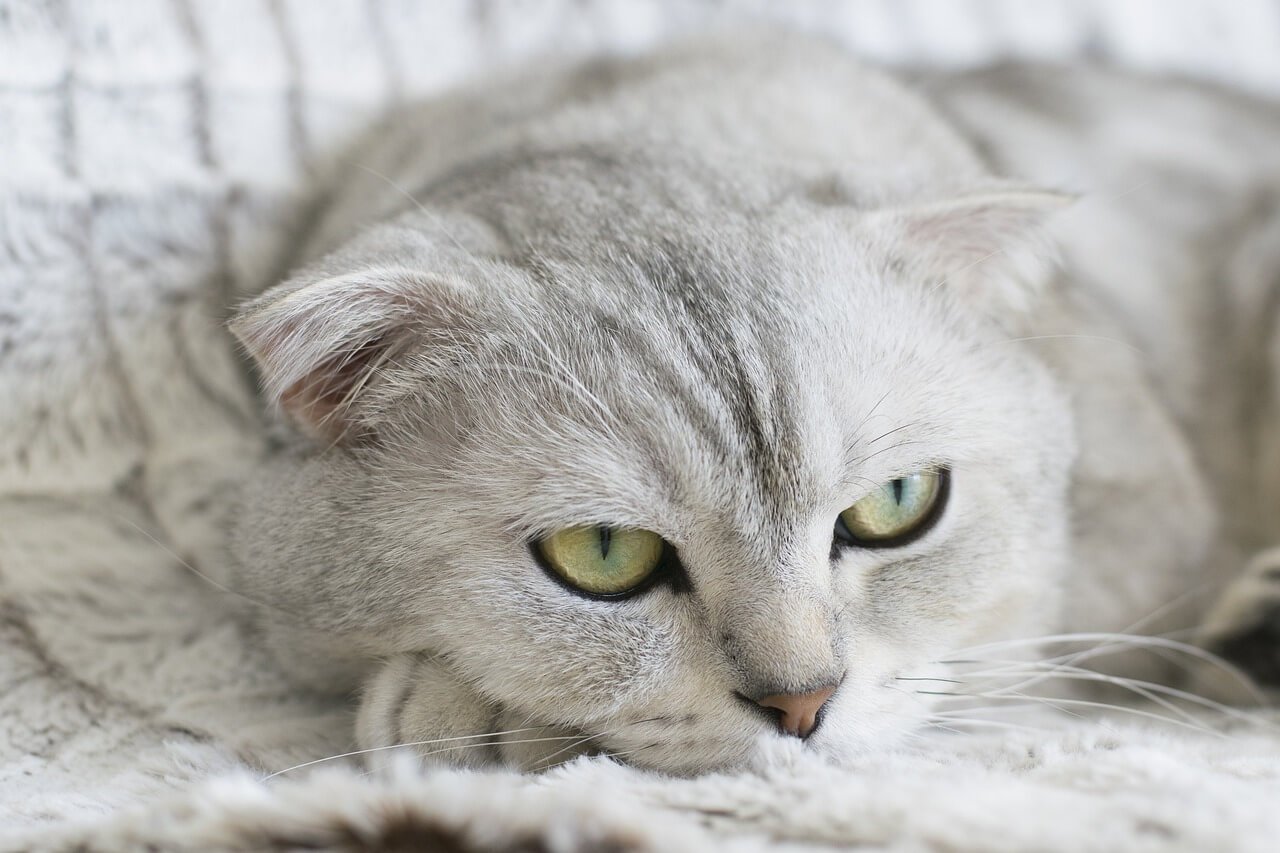Where Your Cat Sleeps on Your Bed and What It Means
Cats are mysterious creatures, and their sleeping habits often reveal fascinating insights into their personalities, preferences, and even their bond with you. One common behavior that many cat owners notice is where their feline friend chooses to sleep on the bed. Is your cat curling up near your head, at your feet, or right in the middle of the bed? Each spot holds meaning and can tell you something unique about your cat’s feelings and instincts. In this blog post, we’ll explore the significance behind these choices, delve into the psychology of cat behavior, and uncover what it means for your relationship with your furry companion.
Common Sleeping Spots and Their Meanings
Your cat’s chosen sleeping spot on your bed can provide clues about their personality, comfort level, and connection to you. Here’s a breakdown of popular sleeping positions and what they might signify.
Near Your Head:
Cats who sleep near your head may feel particularly close to you. This spot allows them to monitor your movements and stay connected to your scent.At Your Feet:
Sleeping at your feet often indicates trust but also a desire to maintain some personal space. It’s a comfortable compromise for more independent cats.In the Middle of the Bed:
A cat who sleeps in the center of the bed may see themselves as the “leader” of the household. They’re confident and enjoy being surrounded by comfort.Curling Up Against You:
Cats who snuggle close to your body crave warmth and security. This position reflects a deep bond and a sense of safety with you.On Your Pillow:
If your cat claims your pillow as their own, it could mean they want to be as close to you as possible, both physically and emotionally.
These sleeping spots offer a glimpse into your cat’s inner world, helping you better understand their needs and emotions.

What Influences Where Your Cat Sleeps?
Several factors can influence where your cat decides to sleep on your bed. Understanding these influences provides context for their preferences and behaviors.
Temperature and Comfort:
Cats seek out warm, cozy spots. If your bed has a soft blanket or heated area, it’s likely to become their favorite sleeping spot.Scent Association:
Your scent plays a significant role in where your cat sleeps. Areas like your pillow or near your head carry your smell, making them appealing.Territorial Instincts:
Cats are territorial animals. Choosing specific spots, like the middle of the bed, may reflect their need to claim prime real estate.Personality Traits:
Shy or anxious cats may prefer secluded spots, while bold cats might opt for prominent positions like the center of the bed.Routine and Habit:
Cats thrive on routine. Once they’ve claimed a spot, they’re likely to return to it consistently unless something disrupts their pattern.
By considering these factors, you can better interpret your cat’s sleeping habits and create a comfortable environment that suits their needs.
Check this guide 👉Why Is My Cat Sleeping So Much? Best 7 Expert Tips!
Check this guide 👉Why Does My Cat Sleep Between Me and My Husband? Best 7 Tips
Check this guide 👉Why Does My Cat Sleep with Arms Stretched Out? Best 7 Tips!
Sleeping Spot | What It Might Mean |
|---|---|
Near your head | Strong emotional bond and desire for closeness |
At your feet | Trust with a preference for personal space |
In the middle of the bed | Confidence and dominance in the household |
Curled up against your body | Craving warmth, security, and affection |
On your pillow | Deep attachment and love for your scent |
How to Encourage Healthy Sleeping Habits
While your cat’s sleeping preferences are largely instinctual, there are ways to encourage healthy and harmonious sleeping habits. These tips ensure both you and your cat get a good night’s rest.
Provide a Designated Bed:
Offer your cat a cozy bed nearby, giving them an alternative to sharing your bed if needed.Maintain a Consistent Routine:
Stick to regular feeding and playtimes to help your cat settle into a predictable sleep schedule.Keep the Bedroom Calm:
Minimize noise and disturbances in the bedroom to create a peaceful environment for sleep.Use Positive Reinforcement:
Reward your cat for sleeping in desired spots, such as their own bed, with treats or praise.Monitor Health Concerns:
Sudden changes in sleeping habits could indicate underlying health issues. Consult your vet if you notice unusual behavior.
By fostering a supportive environment, you can ensure your cat feels safe and comfortable while maintaining your own restful sleep.
Signs Your Cat Feels Secure in Their Sleeping Spot
A content and secure cat will exhibit certain behaviors related to their sleeping habits. Look for these signs to confirm they’re happy with their chosen spot.
Relaxed Body Language:
A relaxed posture, such as lying on their side or exposing their belly, indicates trust and comfort.Purring While Sleeping:
Purring is a sign of contentment and suggests your cat feels safe in their sleeping location.Returning to the Same Spot:
Consistently choosing the same spot shows they’ve found a place that meets their physical and emotional needs.Kneading Before Settling Down:
Kneading is a comforting behavior often associated with feelings of security and happiness.Sleeping Deeply Without Disturbance:
Uninterrupted, deep sleep signals that your cat feels protected and at ease in their environment.
These behaviors highlight your cat’s satisfaction with their sleeping arrangement, reinforcing the strength of your bond.
The Role of Scent in Cat Sleeping Preferences
Scent plays a crucial role in why cats choose specific sleeping spots. Their keen sense of smell guides them to areas that provide comfort and familiarity.
Your Scent Provides Comfort:
Cats find your scent reassuring, which is why they often gravitate toward pillows, blankets, or spots closest to you.Marking Territory with Scent Glands:
Cats use scent glands on their cheeks and paws to mark their sleeping area as safe and familiar.Avoiding Unfamiliar Scents:
Sudden changes in detergent, fabric softener, or room fresheners can deter cats from their usual spots.Comfort Objects Carry Familiarity:
Items like worn clothing or pet beds with their scent make cats feel secure and reduce anxiety.Scent Overrules Temperature Sometimes:
Even if a spot isn’t the warmest, cats may choose it if it smells like their owner or themselves.
Understanding the importance of scent helps you cater to your cat’s sensory needs for a restful sleep.
How Seasonal Changes Affect Sleeping Spots
Seasonal variations can influence where your cat sleeps on your bed, driven by changes in temperature, daylight, and activity levels.
Winter Preference for Warmth:
During colder months, cats may seek out warmer spots, like under the covers or near your body heat.Summer Shift to Cooler Areas:
In warmer weather, cats might avoid direct contact and opt for cooler surfaces, like the foot of the bed.Daylight Hours Impact Activity Levels:
Longer days in summer may lead to more daytime napping, altering nighttime sleeping patterns.Increased Cuddling in Winter:
Cats may cuddle closer during colder seasons to conserve heat and feel secure.Seasonal Shedding and Comfort:
As cats shed their winter coats, they may adjust their sleeping positions to stay cool and comfortable.
Recognizing these seasonal shifts ensures you adapt to your cat’s changing needs throughout the year.
Addressing Behavioral Changes in Sleeping Habits
Sudden changes in your cat’s sleeping habits can signal underlying issues. Being observant allows you to identify potential problems early.
Health Issues May Cause Restlessness:
Pain or discomfort can prevent your cat from settling into their usual spot.Environmental Stressors:
Moving furniture, loud noises, or new pets can disrupt their routine and force them to find new sleeping areas.Age-Related Adjustments:
Older cats may seek softer, more accessible spots due to joint pain or mobility issues.Emotional Upsets:
Changes in household dynamics, such as a new baby or moving homes, can affect their sense of security.Behavioral Training Opportunities:
If unwanted sleeping habits develop, gentle redirection and positive reinforcement can help restore balance.
By staying attentive to behavioral changes, you can address any concerns promptly and ensure your cat remains happy and healthy.
Frequently Asked Questions
Why does my cat always sleep at the foot of my bed?
Your cat may feel more comfortable maintaining some distance while still being close enough to monitor your presence.
Is it okay for my cat to sleep under the covers?
Yes, as long as your cat isn’t at risk of suffocation or overheating. Ensure there’s enough airflow and monitor its comfort.
Should I let my cat sleep on my bed if I have allergies?
Consider consulting a doctor first. If allergies persist, designate specific areas for your cat to minimize exposure.
How can I stop my cat from waking me up at night?
Establish a consistent routine, engage in play before bedtime, and avoid reinforcing nighttime activity with attention.
What does it mean if my cat suddenly stops sleeping on my bed?
Sudden changes in behavior could indicate stress, illness, or environmental shifts. Monitor your cat closely and consult a vet if necessary.
Strengthening Your Bond Through Understanding
Where your cat sleeps on your bed offers valuable insights into their personality, emotions, and connection to you. By observing their preferences and respecting their instincts, you can nurture a deeper bond and ensure their comfort. Whether they curl up near your head, stretch out at your feet, or claim the entire bed as their domain, each choice reflects their unique character and trust in you. Ultimately, understanding these behaviors allows you to create a harmonious living space where both you and your feline companion can thrive together.
Understanding Bone Supplement for Cats: Best 7 Expert Tips! – Safe, vet-approved guidance for strong feline bones & balanced nutrition.
Bone Supplement for Dogs: Best 7 Expert Tips! – Expert guide to calcium, collagen & bone health for every life stage.
Understanding Can Cats Get Sunburn: Best 7 Expert Tips! – Protect your feline from UV damage with vet-backed prevention strategies.
How to Train a Seizure Alert Dog: Best 7 Expert Tips! – Learn expert-backed steps to nurture natural instincts into reliable, life-saving seizure alerts.





